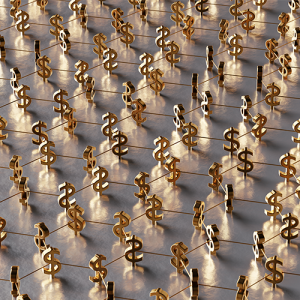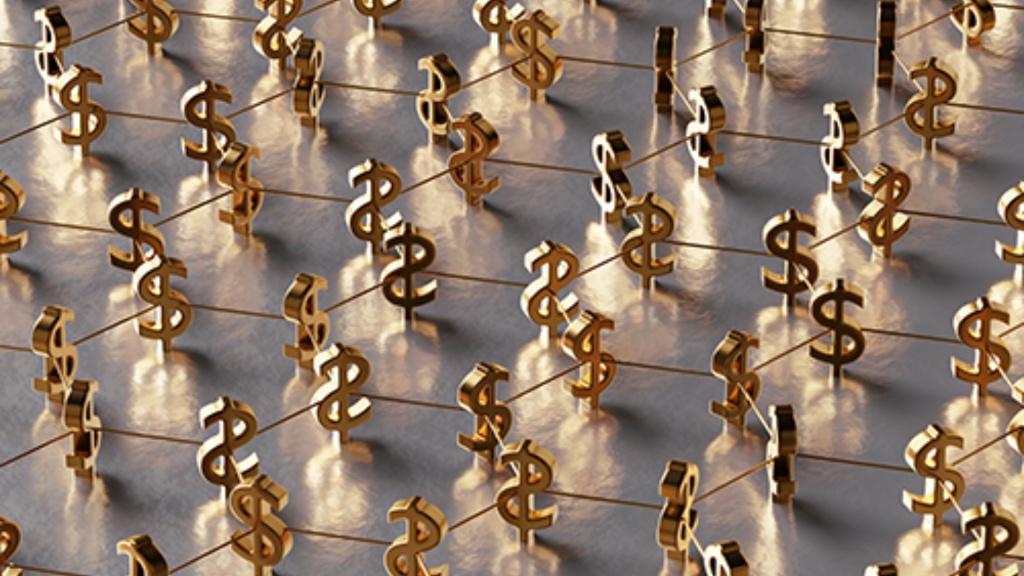 In no uncertain terms, the two big question marks in the U.S. economy during 2022 were inflation and the Federal Reserve. More specifically, to what length would the Federal Reserve go to crush what had become non-transitory increases in consumer prices? No one doubted the Fed would have to do something. However, no one had a good idea whether the previously “dovish” Chairman of the Federal Reserve, Jay Powell, would become an inflation hawk.
In no uncertain terms, the two big question marks in the U.S. economy during 2022 were inflation and the Federal Reserve. More specifically, to what length would the Federal Reserve go to crush what had become non-transitory increases in consumer prices? No one doubted the Fed would have to do something. However, no one had a good idea whether the previously “dovish” Chairman of the Federal Reserve, Jay Powell, would become an inflation hawk.
Unfortunately, the Fed was in a no-win situation. It scared investors by aggressively raising the target overnight lending rate. Even so, most measures of consumer inflation were still much higher than their long-term targets at year-end. In essence, a lot of investors lost a lot of money in 2022, and inflation was still a problem at the end of December.
But were things really as bad as all of that? At least in the domestic economy? How about a perfectly noncommittal answer: it depends on where you look.
For instance, ask anyone in the real estate business, commercial or residential, about the economy. They will all unhappily tell you their business couldn’t get much worse than how it ended the year. That sort of thing happens when mortgage and other borrowing rates more than double in less than 12 months. It is just the math. Buyers can afford less house/building/real estate for the same monthly payment. After all, more money is going to their lender than their equity.
That will slow investment 100% of the time.
However, consumers often judge the health of things with their eyeballs. Are the roads groaning with traffic? Are the parking lots full and the stores crowded? Is it difficult to get a reservation at a favorite restaurant? Is flying somewhere, anywhere, prohibitively expensive? Are there “help wanted” signs in the windows and are business owners complaining about not being able to find workers?
If anecdotes determined the health of the economy, the United States was on a roll in 2022.
So much so, people wondered whether we were in a recession last year. Yes, we had two consecutive quarters of contraction in the Gross Domestic Product (GDP) equation to start the year, (1.6%) and (0.6%), respectively. But were things really as bad as all of that? After all, fluctuations in inventories and the trade deficit had much to do with headline numbers. At the household level, the economy wasn’t hitting on all cylinders, but it also wasn’t a repeat of 2008 either.
Then, the Bureau of Economic Analysis (BEA) informed us the economy actually grew at a 3.2% annual rate during the 3rd Quarter. But were things really that strong? Or did a pendulum in the trade data swing in the opposite direction, clouding the numbers?
So What is the Real Story? Growth or No Growth?

In truth, 2022 was about as confounding as it gets when it comes to analyzing economic data. The good news wasn’t really all that good. The bad news really wasn’t all that bad. At times, I felt the Ministry of Truth from Orwell’s 1984 was pumping out economic data. It all
felt like “newspeak,” and 2+2 really did seem to equal 5 in some of the reports.
To quote the book and to fairly summarize the last 12 months:
“For, after all, how do we know that two and two make four? Or that the force of gravity works? Or that the past is unchangeable? If both the past and the external world exist only in the mind, and if the mind itself is controllable – what then?” – George Orwell
But what was the underlying truth? How did we end the year? How are we entering the new one?
Simply put, the U.S. economy was weaker in 2022 than it was in 2021. That was to be expected after the previous year’s torrid growth. As a result, decent growth would seem tepid by comparison. For its part, tepid would feel disastrous at times. Let me cut to the chase say last year was tepid.
By just about any measure, 2022 should have been a forgettable year. After all, at the end of the 3rd quarter, the 12-month change in was an unimpressive 1.9%. Further, banks actually extended a decent amount of credit last year, more than even in 2021. The dollar was stronger than other major trading currencies. Interest rates crept up but were still less than the accepted rates of inflation. Finally, after starting off the year hot, commodity prices were getting back to normal by the end of December.
But for the disastrous market results, analysts and pundits of all stripes could have chalked up last year as so much: “what did you
expect after 2021?” There is more than a grain of truth in that comment. In fact, there is a pound of it.
So, what about 2023?
Unfortunately, the crystal ball isn’t terribly encouraging for the first part of the year, at least in terms of overall economic activity. However, it is also difficult to predict a Doomsday scenario as well. If you skip to our short-term predictions at the end of this publication, you will find the following:
The trailing 12-month inflation data will continue to trend downward in aggregate. By the middle of 2023, the Fed should have
more than enough reason to stop raising rates should it so desire. Whether it will is still anyone’s best guess. The Gross Domestic Product (GDP) equation will look bizarre at the start of the year. Consumer expenditures on goods will be negative but spending on services will be positive. Real estate and inventories will be a drag on the I component. However, improvement in our trade deficit should offset some of the inventory correction. Finally, government spending might be enough to keep us out of deep red territory, thanks to the recent omnibus bill.
Essentially, the recent, massive spending bill will likely provide enough support to keep the economy from contracting significantly for the first several quarters of 2023. That is IF it contracts at all. Still, vibrant economic growth will be difficult to realize for the following reasons.
First, the Federal Reserve will likely raise the target overnight lending rate by at least an additional 50 basis points (0.50%). This will take the top end of the overnight range to 5.00%, which would be the highest since 2007. Intuitively, when the monetary authorities make money more expensive, consumers will demand less of it. This has always happened in the past, and there is no reason to believe it won’t happen in the future.
The Fed Got Pretty Aggressive in 2022. It Probably Has a Little Room to Go.

Second, despite the increase in loans and leases last year, the domestic money supply, as defined by the M2 index, has been shrinking. At the end of December 2021, the Federal Reserve estimated this definition of the money supply was $21.49 trillion. By the end of November 2022, it had fallen to $21.35 trillion. While that is not the type of contraction that would presage a financial system panic or correction, it is difficult to find periods of vibrant economic activity when the money supply is shrinking. That is pretty intuitive. In fact, perhaps somewhat alarmingly, until last year, M2 hadn’t fallen in any one calendar year since at least 1959. But, then again, what should we have expected after it had grown in excess of $6 trillion over the previous two years?
What Happens When the Money Supply Quits Growing? Do We Know?

Third, for the 12 months ending in November 2022, ‘Merchant Wholesalers Inventories’ grew at a compounded 20.7% annual rate. Obviously, that rate of growth isn’t sustainable absent a sharp spike in end-consumer demand, which would be a neat trick when the money supply is already stagnant. In essence, businesses will be ordering less next year, which will help to keep a lid on the overall GDP equation.
Fourth, as earnings start to increase at a decreasing rate thanks to higher interest rates, corporate America will start to either eliminate positions or abandon plans of filling open ones. Either way, this bodes poorly for massive job growth. This is a problem in a consumer-driven economy because new jobs mean new paychecks, which means new consumers. Don’t get me wrong, this doesn’t mean the official Unemployment Rate will spike to October 2009’s 10.0% rate. Far from it. However, it DOES mean the number of job openings in the U.S. economy will likely fall significantly as the year progresses.
Finally, and this is maybe the most important, borrowing and lending will likely slow significantly from last year’s pace. This is due to what is known as an inverted yield curve, which is when short-term borrowing costs are higher than long-term lending ones. In this type of interest rate environment, banks tend to extend less credit, which has historically always slowed the economy.
When It Costs Banks More to Borrow Will They Continue to Lend As Much?

Clearly, this is a less-than-robust economic outlook. However, it is a realistic one as we start 2023, basically on fumes. Please note, while there is nothing in my crystal ball to suggest rampant economic growth, there also isn’t anything in it portending collapse either. Basically, if you liked 2022’s frustrating economic output, you should like 2023 a lot. However, things should look much brighter by the end of the year!


